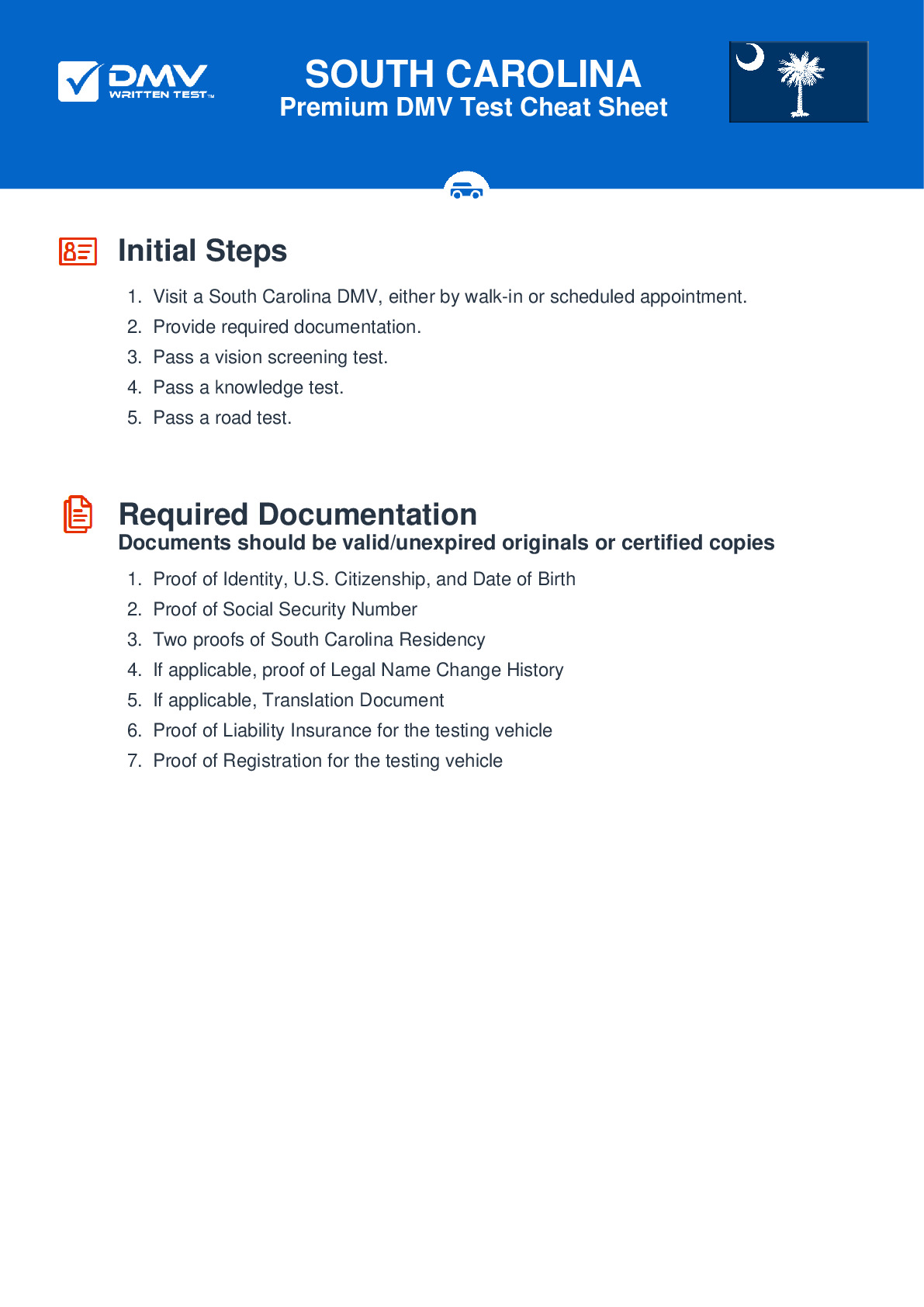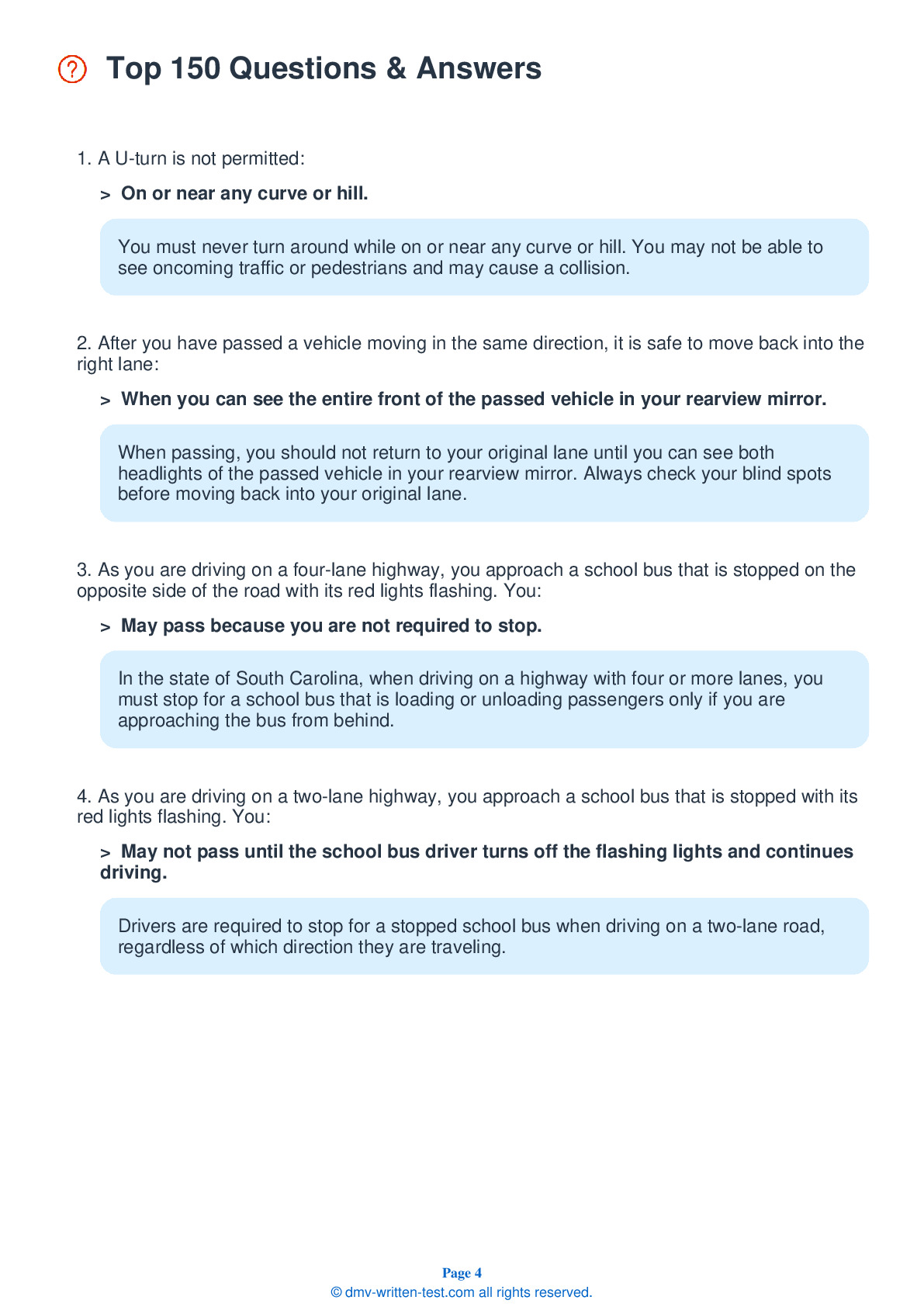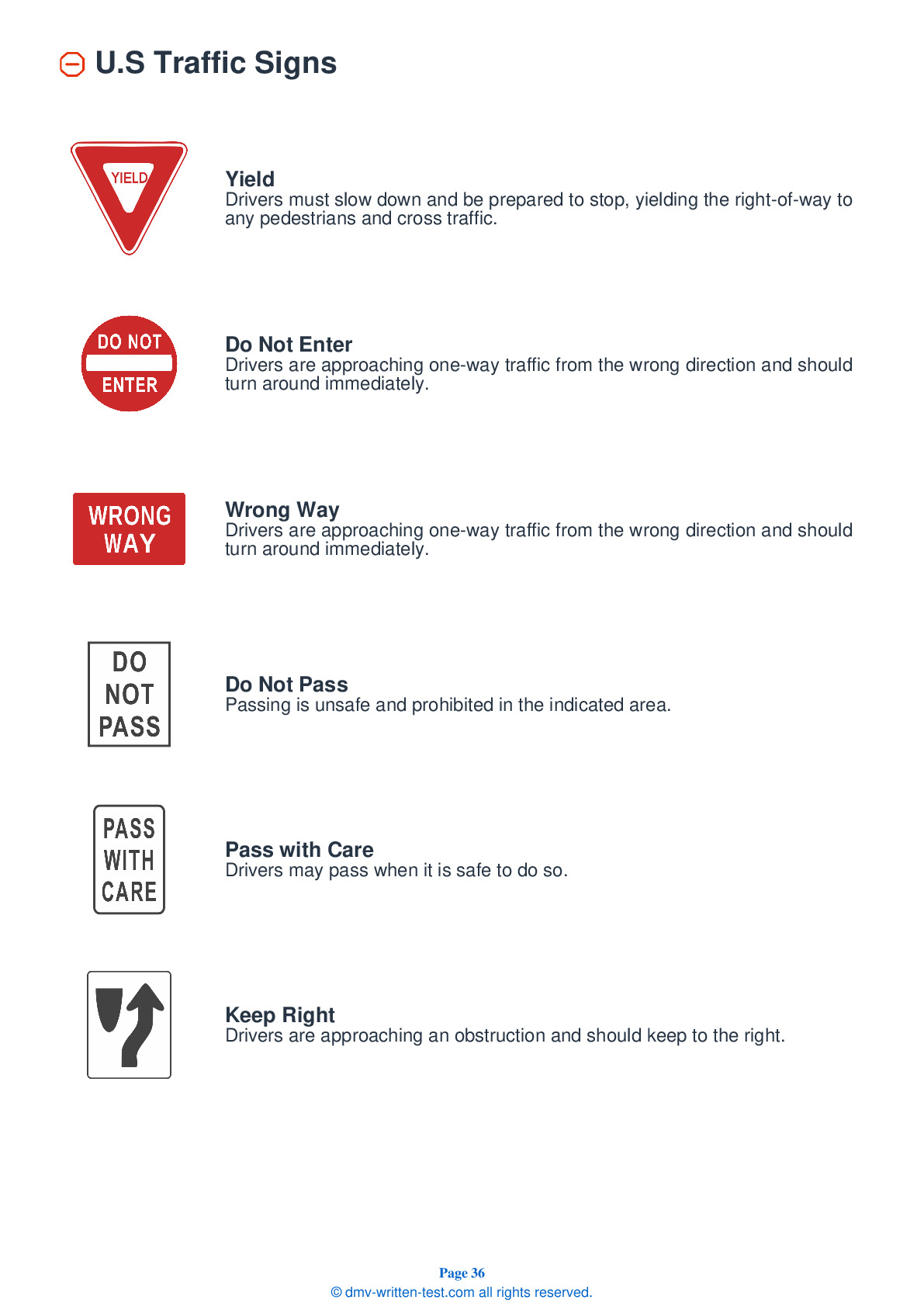2025 South Carolina Permit Test 8
The following questions are from real DMV written tests. These are some of the actual permit questions you will face in South Carolina. Each permit practice test question has three answer choices. Select one answer for each question and select "grade this section." You can find this button at the bottom of the drivers license quiz. For a complete list of questions and answers for South Carolina please visit https://cheat-sheets.dmv-written-test.com/en/south-carolina/car.
Number of Tests
Number of Question
Passing Score
1. This sign means:

Explanation
Eight-sided traffic signs warn drivers that they must stop and yield the appropriate right-of-way at an intersection. Drivers may proceed when it is safe to do so.
2. Which is the most common cause of traffic crashes?
Explanation
Crashes often occur when one driver does not see another vehicle or when a driver does something unexpected. Communicate with other drivers on the road to help prevent traffic crashes.
3. When you are backing up, it is usually best to:
Explanation
Turn your head to look behind you before and while backing up. Steer with one hand when backing up or when operating vehicle controls. You should keep both hands on the wheel at any other time.
4. Which statement about making a right turn is true?
Explanation
After yielding to traffic and pedestrians, you may turn right when stopped at a steady red traffic signal, unless posted signs prohibit it. When making a right turn, you should stay close to the right edge of the roadway and turn into the lane nearest to your previous lane.
5. It is unlawful to:
Explanation
It is illegal to cross the centerline to pass when driving on hills, in curves, and in other locations where you cannot see ahead far enough to pass safely. You may not pass at street crossings, at railroad crossings, where signs indicate no passing zones, or where a solid yellow line is next to your lane. You may not pass when the vehicle in front of you has stopped for a pedestrian or when driving in work zones where passing would be hazardous.
6. Two solid yellow lines on the pavement mean:
Explanation
Yellow lines tell you that the traffic on the other side of the lines is moving in the opposite direction. You should never cross two solid yellow lines to pass from either direction.
7. It is important to slow down:
Explanation
You should always slow down when driving on narrow or winding roads, near intersections, near railroad crossings, on hills, in sharp or blind curves, where there are pedestrians or driving hazards, and when the roads are wet or slippery.
8. When the driver behind you wants to pass, you should:
Explanation




